Tom M...thanks. That helps me get some context regarding the time it was written. Maybe he didn't have a personal battle with CBM/Raynor, but perhaps he had philosophical difference with those guys. Goldern Age architects minimalism (Behr, Mackenzie, Ross) vs. Maximalism/man-made feature (CBM/Raynor). Who knows?

On the other posts, I think you guys make some great points. And I've been thinking about it for awhile. I really think Peter has hit on a key concept and I think it ties in with basic Golden Age ideas..good architecture=fun for high handicapper and challenge for the scratch man. Give the scratch player different choices of how to play a hole, while giving ample room for the high marker to mis-hit the ball all over the place, not loose a ball, and have fun. I think they could be one and the same.
Here are some photos that might help clarify what I am driving at. And, of course, I am no expert...so critiques, comments, and opinions are always welcome.
Take a look at this one...8 at Ballyneal. Perhaps the most open hole I've ever played, that lets you choose your avenue of approach and/or slap the ball randomly down the fairway. I think the hole is great in every way, shape, and form.

Here is a par 3 with options at Pine Needles. Hit it straight ahead and leave yourself a lot of green to work with as you chip/pitch to the flag...or try to carry the bunkers/fade the ball on to the flagstick. Other than the redans I've seen, this is actually a strategic par 3.
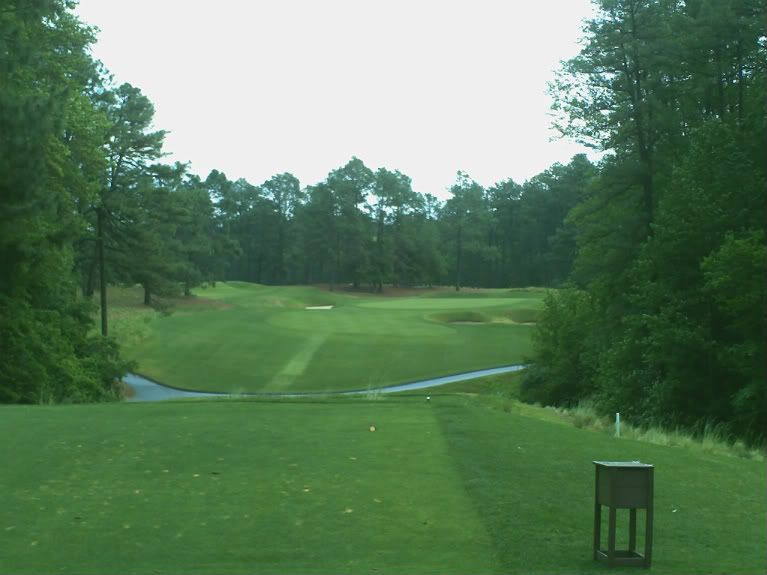
Here are two Ross par 4 holes. #5 at Pinehurst and #4 at Seminole. Both are the approach shots that allow you to challenge the green with an angled shot over the bunkers...but both greens are not pushovers and precise shots are required. Or you could play out to the right and leave a pitch shot to the green with a lot of real estate to work with and no bunkers in your way.
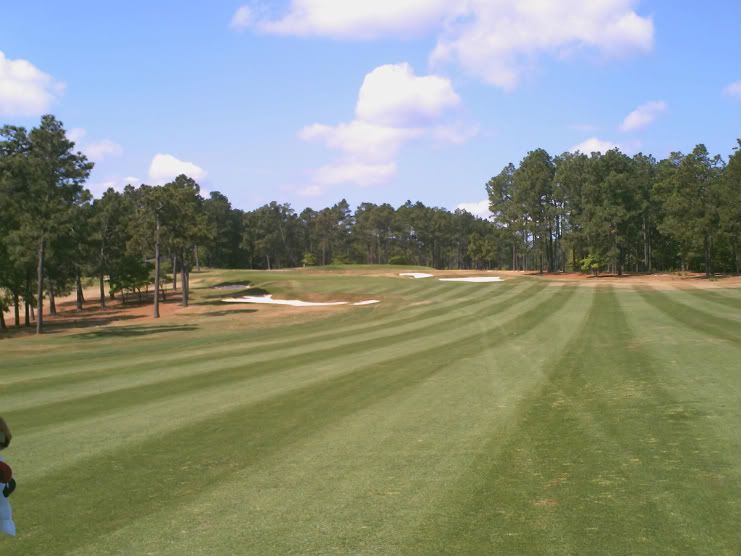
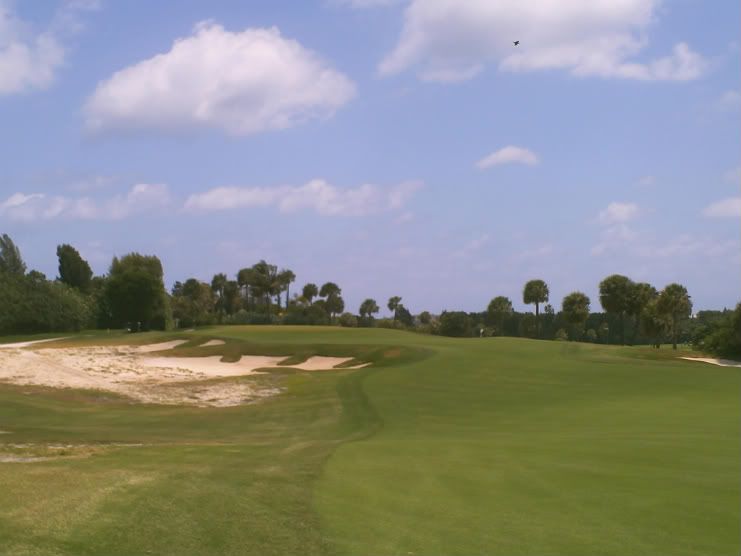
And here is #2 at the Pete Dye Golf Club of WV. I've seen Dye use the concept a lot and I think it is genius. He opens up the tee shot to a variety of options for the high and low handicapper to pick and choose their best option. This one can be a 125 yard tee shot to a very wide fairway, that will leave about 180+ into the green. Or the golfer can push the ball further and further to the left and challenge the hole for birdie, but the forced carry gets longer and the fairway gets shallower.
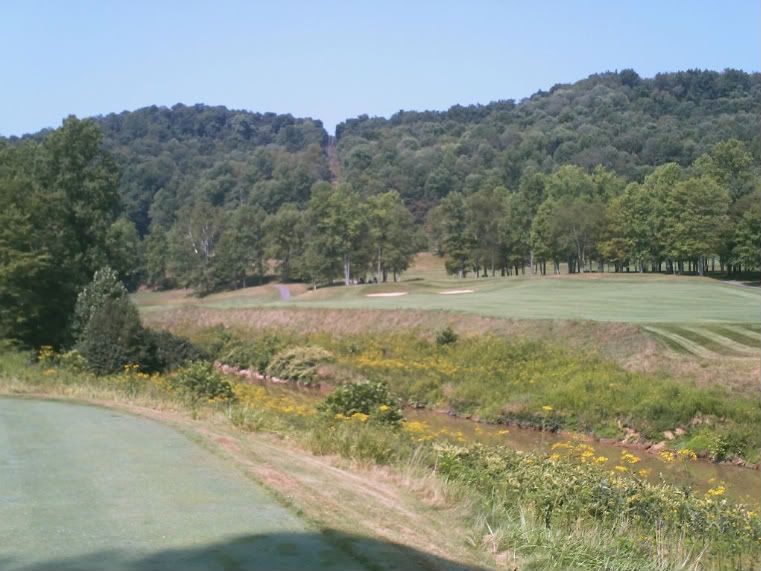
And here are couple holes that I actually like because they are simply a test of your golf swing mechanics. 16 at St. Ives and 11 at Seminole. BUT they don't really open up many options at all...hit it long and straight or pay the price. Do it again to make the green and sink some putts. So, I think the high handicapper won't like these holes and to Peter's point...they won't have the luxuary of slapping the ball around and getting away with it. Great holes? Depends on your handicap, most likely.
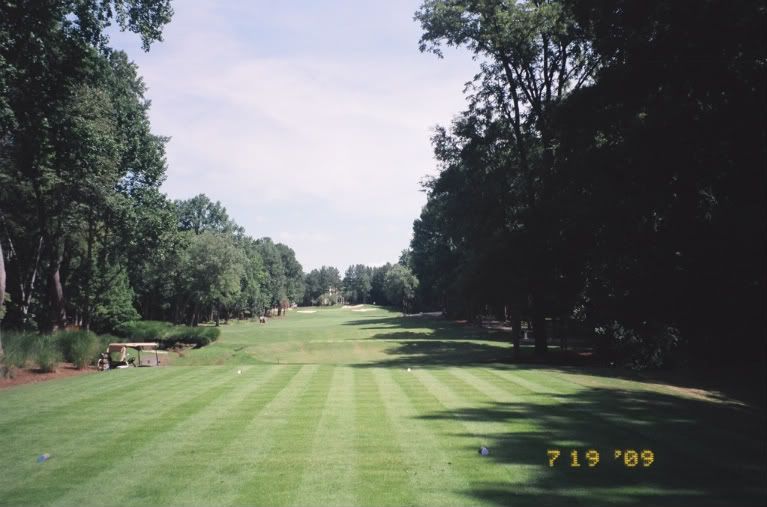

And my last photo for this post...
Yeamans Hall 2. At first I thought this hole was bland and too straightforward...but thinking more about it...it has options. This photo is of the approach shot. I hit a 120 yard shot high arcing shot right at the flagstick that just barely held the green. My other option after thinking about it and looking at the photo is too run the ball in along the ground. Use the firm and fast surface to my advantage, instead of against me by hitting a high shot right at the flag stick when the greens are firm and fast as well.
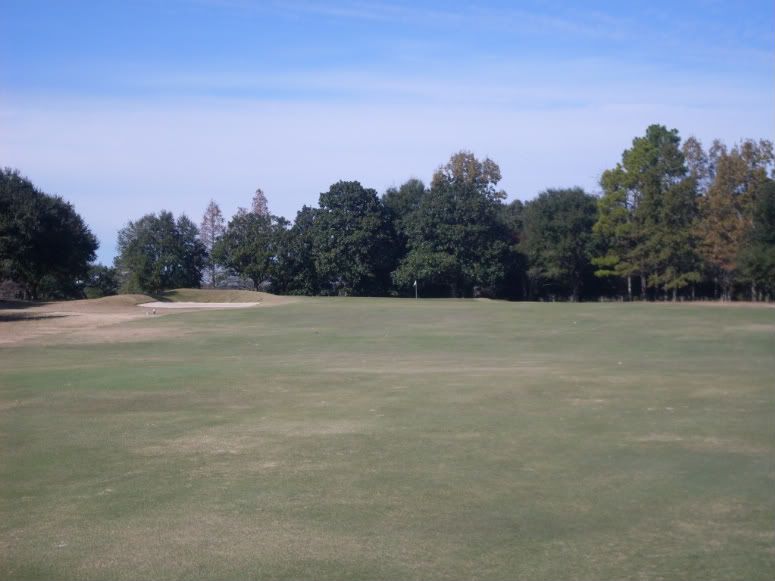
And to Shivas' point, these aren't decision that take 20 minutes of hair pulling anguish and strife to make. You take a peak, think about it, and try it. But to RJ's point (and others), the more options available to try, the higher the interest in getting back out there and giving it another go.
FYI...Sean just posted and I haven't had a chance to read it yet.